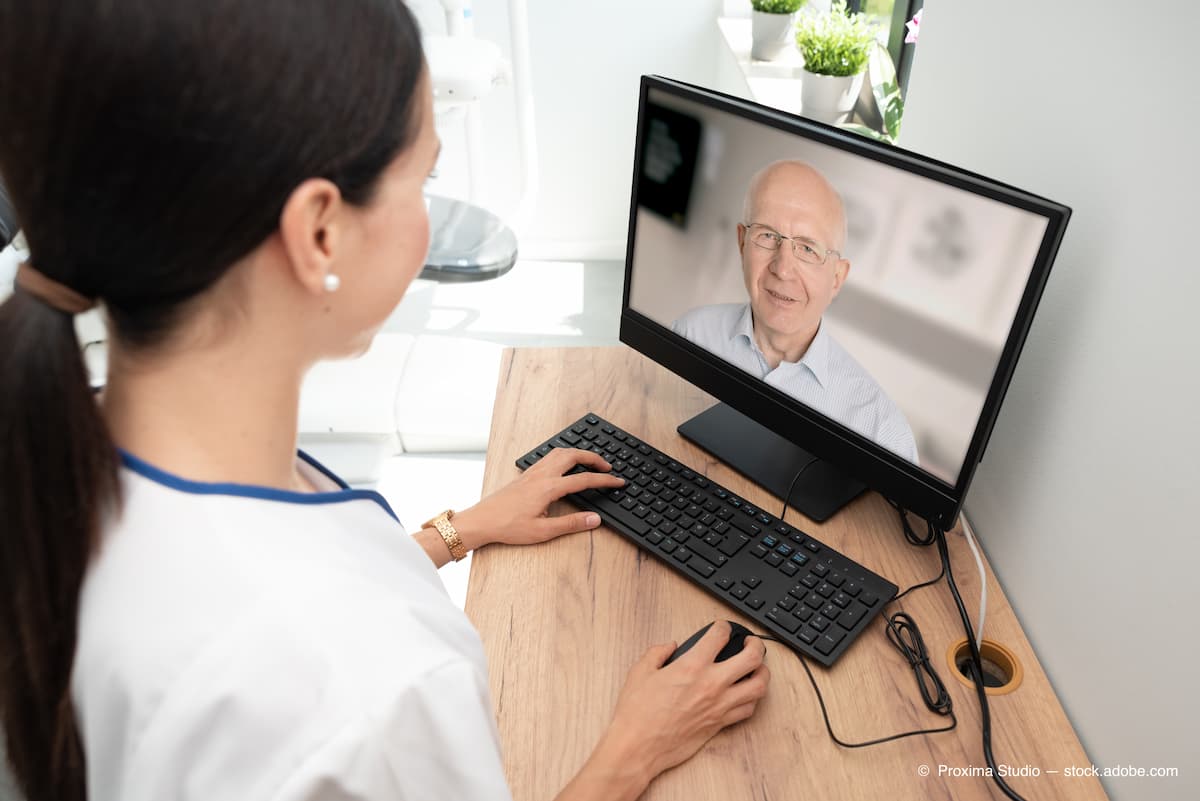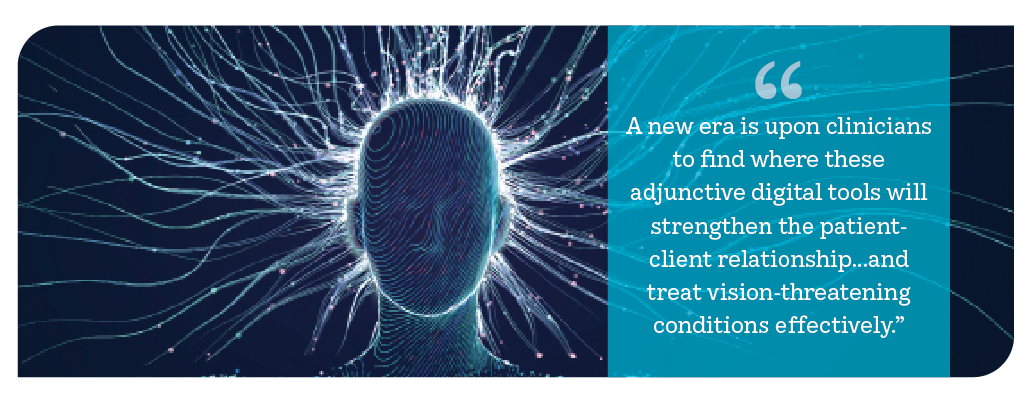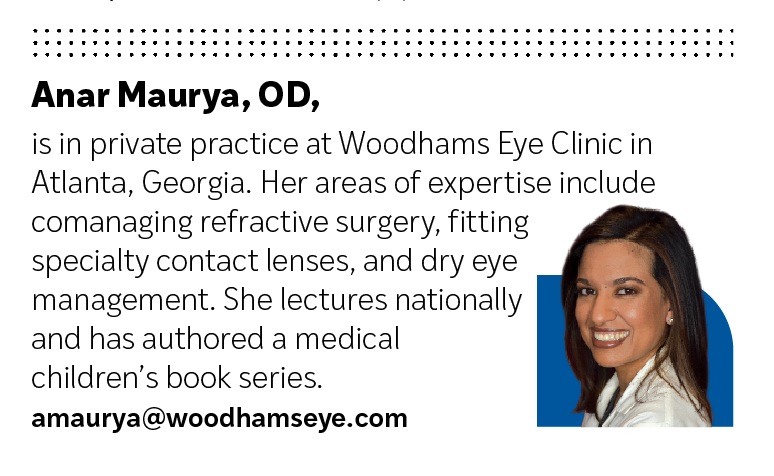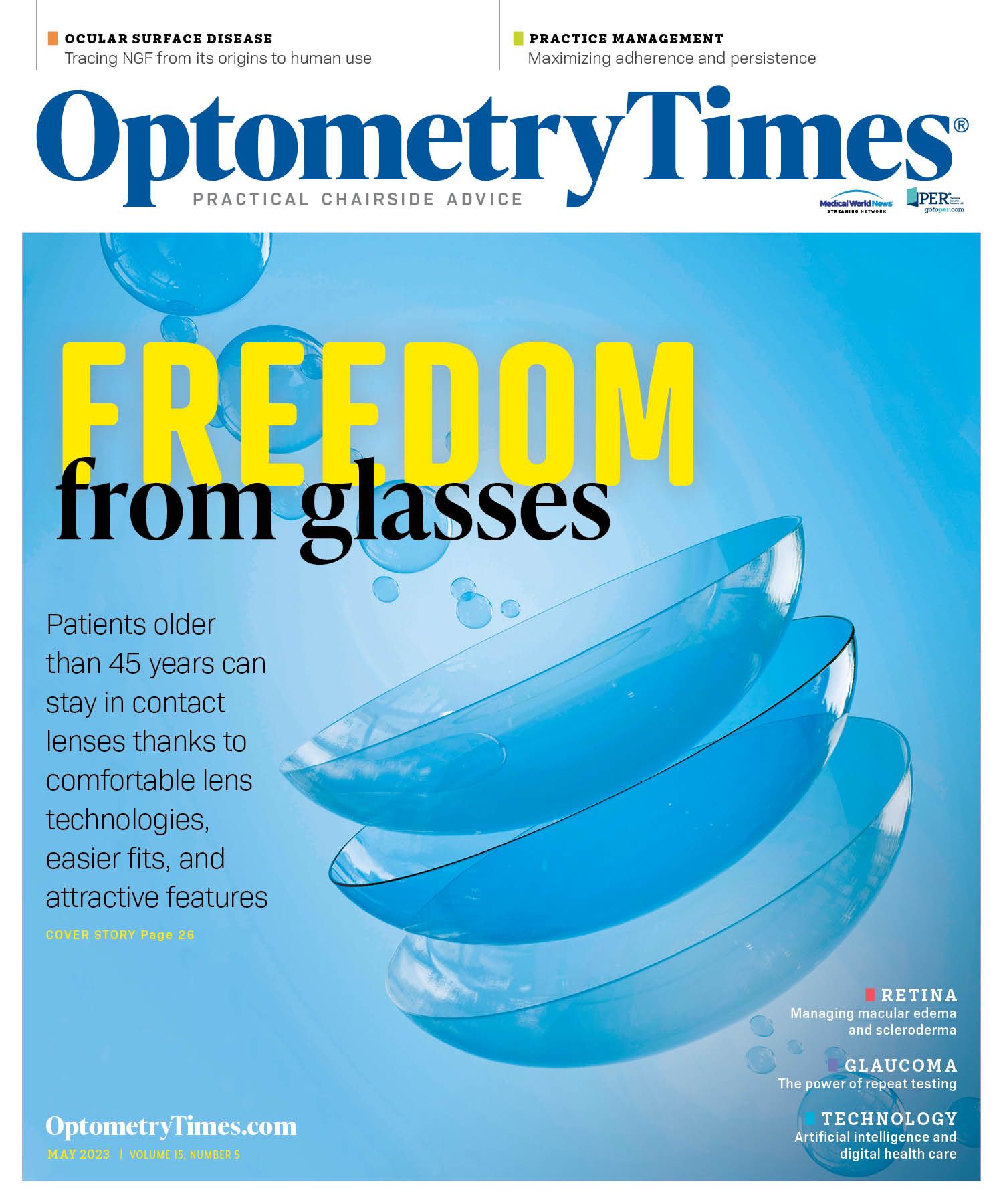Digital health care evolves in the aftermath of the pandemic
Artificial intelligence is the future of optometric disease monitoring.
At-home digital eye care technology is revolutionizing the way that eye care is delivered, and it is likely to play an increasingly prominent role in the field. By improving patient convenience, access to care, and self-management, at-home digital eye care technology has the potential to greatly improve patient outcomes and satisfaction. (Adobe Stock/Proxima Studio)

The recent COVID-19 pandemic has brought a surge of at-home digital technology that eye care practitioners can incorporate into their practice.
Are these new devices beneficial? When should they be implemented? We will explore novel technologies that have emerged in recent years: the iCare HOME tonometer and Notal Vision’s ForeseeHome (FSH) monitoring device.
These tools allow patients to monitor and manage their eye health from home, which can greatly improve convenience, adherence, and access to care. Artificial intelligence technology is the wave of the future; it is up to eye care providers to investigate the design, efficacy, and clinical utility of each digital device.
The iCare HOME device is a handheld, battery-operated, rebound tonometer that received FDA approval in March 2017; the latest edition, the iCare HOME2, received FDA approval in March 2022. The small, portable, easy-to-use design allows patients to take intraocular pressure (IOP) measurements at home.
This iCare device allows patients to be reclined or supine for reliable IOP measurements without need for topical anesthetic, and with minimal training. Of all subjects who were trained to perform self-tonometry, 84% agreed that the device was easy to use, and 91% agreed that they would use the device at home.1
In addition, the newer model comes with easy patient-doctor communication via the cloud-based software, iCare CLINIC, and daily monitoring via the PATIENT2 app. Through these Bluetooth-enabled software features, patient and clinician can access all recorded IOP data and diurnal variation in a graph on the app or web browser 24 hours a day, 7 days a week.
Practitioners can be reassured that patients receive proper training and certification before self-administering iCare HOME tonometry. Patients must pass the certification process to begin use at home. No further calibration or maintenance is required, and replacement probes can easily be purchased via a doctor’s prescription on the iCare website. In addition, easy access to customer service support is available for patients.
With these easy-to-use features, clinicians can feel confident that patients are able to accurately measure IOP at home and that communication and alerts will be appropriately received. Rebound tonometers like the iCare HOME device have been shown to be comparable to the Goldmann tonometer,2 which remains the gold standard for IOP measurements.
According to studies comparing Goldmann and rebound tonometry, central corneal thickness equally influences IOP obtained from both rebound and applanation tonometry,3 so central corneal pachymetry measurements should be considered for accurate IOP measurements taken via either means.
Where are the digital applications for iCare HOME tonometry most effective? Ideally, these diurnal measurements can aid in comparing the effect of glaucoma drops to find the optimum glaucoma drop regimen; can reveal whether glaucoma surgery or more aggressive treatment is needed; can monitor postsurgical patients easily without delay; and can be invaluable for patients living in rural areas or remote settings with limited access to clinical care. Home measurements are also indispensable during a pandemic. More beneficial uses will be unveiled as home digital eye care becomes more prevalent.
The FSH Amsler grid is another home-based monitoring device that received FDA clearance for the management and monitoring of age-related macular degeneration (AMD). This device is recommended for patients with intermediate AMD and best-corrected visual acuity (VA) of 20/60 or better, with the specific aim of helping detect conversion to choroidal neovascularization. The ideal patient candidates are those undergoing anti-VEGF therapy, those with wet AMD in the fellow eye, monocular patients who have already lost vision secondary to neovascular AMD, and any patient considered at high risk.
Once a doctor enrolls a patient in the FSH monitoring, the Notal Vision customer service representatives work closely with the individual from setup to troubleshooting to alerts. The FSH device gives patients a sense of security, knowing their test results are continually monitored by the data center and by their clinician’s office.

For the practitioner, the FSH report provides evidence of adherence and detects possible conversion to wet AMD in between office visits. If a change is detected, patient and clinician are alerted immediately and an office visit is scheduled In most cases, FSH is covered by the patient’s insurance with a monthly co-pay.
FSH uses a patented technology called preferential hyperacuity perimetry (PHP), more commonly known as vernier acuity, whereby the device measures the ability to discern an irregularity among 2 line segments or gratings. This type of objective and reproducible detection helps to detect changes in macular function with high sensitivity and specificity.
Ophthalmology Retina recently published findings from the Analysis of the Long-term Visual Outcomes of ForeseeHome Remote Telemonitoring (ALOFT) study.
According to the retrospective study, 2123 patients were monitored with the FSH device from August 2010 to July 2020 from 5 referral retinal clinics to analyze adherence and real-world visual outcomes of the FSH device. The study highlighted the outstanding adherence rate of 5.2 times per week on average and an average VA of 20/32 at wet AMD conversion with 84% of patients maintaining 20/40 or better VA for years after treatment initiation.4
ALOFT reinforces that early detection is important for better long-term vision. The clinical utility for FSH was also established in the HOME (Home Monitoring of the Eye) study, part of the National Eye Institute–sponsored AREDS2 study, in which 94% of patients using FSH twice weekly who progressed to wet AMD maintained 20/40 or better vision compared with only 62% of patients whose diagnosis was during a routine eye exam or a visit triggered by symptoms.5
FSH self-monitoring serves as adjunctive home care that can strengthen the patient-doctor relationship. Patients are likely to perceive doctors favorably for implementing digital technology and appreciate the autonomy of monitoring disease in the comfort of their homes. In head-to-head studies, PHP technology, as utilized by FSH, is far superior to the Amsler grid6 in detecting functional changes in the patients with geographic atrophy and has been shown to correctly detect indicators of neovascular AMD more than 80% of the time,4 representing a significant improvement over the Amsler grid.
Studies by Kampmeier and Botros revealed that the Amsler grid is comparable to PHP testing for early to intermediate AMD; however, PHP testing was revealed to be a more reliable indicator for late-stage AMD. In their studies, PHP detected disease-related functional changes in
85% of patients with geographic atrophy vs 62% of patients utilizing the Amsler grid.6 These clinical data become useful in deciding which patients to enroll in FSH, and clearly make the case that FSH is more beneficial in later stages of AMD.
In conclusion, at-home digital eye care technology is revolutionizing the way that eye care is delivered, and it is likely to play an increasingly prominent role in the field. By improving patient convenience, access to care, and self-management, at-home digital eye care technology has the potential to greatly improve patient outcomes and satisfaction.

A new era is upon clinicians to find where these adjunctive digital tools will strengthen the patient-clinician relationship, provide precision medicine, detect disease early, predict progression, and treat vision-threatening conditions effectively. Continued strict review of the accuracy, feasibility, areas for improvement, and potential for future applications is important in adapting new technology. It is up to clinicians to determine how to use them wisely.
References
1. Dabasia PL, Lawrenson JG, Murdoch IE. Evaluation of a new rebound tonometer for self-measurement of intraocular pressure. Br J Ophthalmol. 2016;100(8):1139-1143. doi:10.1136/bjophthalmol-2015-307674
2. Quérat L, Chen E. iCare Home vs Goldmann applanation tonometry: agreement of methods and comparison of inter-observer variation at a tertiary eye centre. Eur J Ophthalmol. 2023;33(1):312-318. doi:10.1177/11206721221099252
3. Iliev ME, Goldblum D, Katsoulis K, Amstutz C, Frueh B. Comparison of rebound tonometry with Goldmann applanation tonometry and correlation with central corneal thickness. Br J Ophthalmol. 2006;90(7):833-835. doi:10.1136/bjo.2005.089870
4. Loewenstein A, Ferencz JR, Lang Y, et al. Toward earlier detection of choroidal neovascularization secondary to age-related macular degeneration: multicenter evaluation of a preferential hyperacuity perimeter designed as a home device. Retina. 2010;30(7):1058-1064. doi:10.1097/IAE.0b013e3181d1a75e
5. Mathai M, Reddy S, Elman MJ, et al; ALOFT study group. Analysis of the long-term visual outcomes of ForeseeHome remote telemonitoring: the ALOFT study. Ophthalmol Retina. 2022;6(10):922-929. doi:10.1016/j.oret.2022.04.016
6. Zorn MM, Kampmeier J, Botros YT, Lang GE. Comparison of preferential hyperacuity perimeter (PHP) test and Amsler grid test in the diagnosis of different stages of age-related macular degeneration. Invest Ophthalmol Vis Sci. 2005;46(13):240.

Newsletter
Want more insights like this? Subscribe to Optometry Times and get clinical pearls and practice tips delivered straight to your inbox.